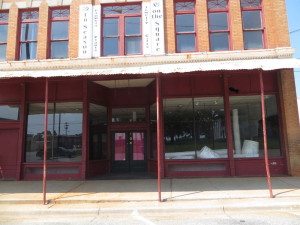
John Salhus, staff member of Parma Conservation and lead conservator of paint at the Kohler Foundation’s multi-year restoration at Pasaquan, found himself spending over a year in rural Georgia with a fair amount of free time on his hands.
Inspired by the spirit of St. EOM, John began to parallel the restoration work he was performing at Pasaquan with a personal creative explosion of his own. The price of real estate is the nemesis of many a fine artist, and studio space where John currently lives in Chicago does not come cheap. So when John learned that he could rent a very large storefront for a very small sum, he immediately opened Buena Vista Projects.
Studio + school + gallery
Salhus’s initial idea for a personal studio soon grew into an art community space where he could train young locals to think and express themselves creatively. At Pasaquan John felt that when possible he had a duty to hire a number of young people to help — a duty that sometimes backfired when the flexibility of their personal ethics or their vague ideas about when to actually show up for work conflicted with John’s. But John pressed on because, like Eddie himself, he felt that getting local people physically and aesthetically involved with Pasaquan was an important part of the site’s and the restoration’s social legacy.
The strategy is working. Young people have learned new skills at Buena Vista Projects and eventually enjoyed the opportunity to exhibit their artworks there. In a town with zero cultural infrastructure, this was a very big deal for local young people who began to receive new forms of recognition, praise and even media attention for the first time in their lives.
Art on the scale of Pasaquan is more than handling line, color, and form — it also involves handling people with grace and finesse and insight, a life lesson that was taught by Eddie himself.
Direct link to Eddie
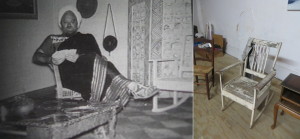
There is another direct line between Pasaquan and Buena Vista Projects — the physical space itself. Eddie Owen Martins purchased nearly all of his paint and concrete at the hardware store on the town square, the very spot now occupied by Buena Vista Projects.
Upon learning that some furniture from Eddie’s house was on its way to the dumpster, John commandeered an old rocking chair which became John’s “thinking spot” within Buena Vista Projects. It turns out that the chair was one of Eddie’s own thinking spots as well.
Personal forms, local materials
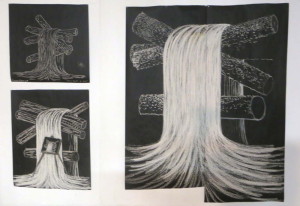
Raised in Minnesota, Salhus’s own artwork presents a highly personal visual vocabulary of forms and motifs, often involving enigmatic waterfalls and dreamlike arrangements of logs. Though he identifies as a fine art painter and spends his days restoring the painted artworks of St. EOM, he found his free time in Georgia make a spontaneous turn toward the act of drawing.
He kept notebooks with hundreds of sketches and began executing large scale drawings (10+ feet high) using one of the region’s most bizarre geological materials: white durt.
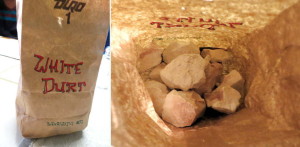
White dirt (locally spelled as “white durt”) is a very smooth kaolin clay from the soils of Georgia. Small bags can be bought for a few dollars at convenience stores and gas stations. People there intentionally eat chunks of it, a phenomenon called geophagy which is a somewhat covert Southern habit as well as the topic of a new documentary.
For many, eating white durt becomes a physical craving, possibly for the soothing effects it can have on digestion. Kaopectate is a commercially available antidiarrheal that used to be made with kaolin (hence the name).

But for John, white durt became an art medium. Large drawings made with white durt markings on black tar paper appeared to resemble reversed photo negatives of his large drawings made with charcoal on white paper. Salhus’s integration of local materials into his personal iconography reveals just how deeply the Buena Vista area has influenced his creative practice.
A world within, a world away
Salhus, like St. EOM himself, appears to enjoy using the isolation of Pasaquan and Buena Vista as a spur to creative action and productivity. By his own admission Salhus is finding new wellsprings of inspiration and artistic fertility in the green hills of Marion County, helping him better understand not only the creative psyche of St. EOM, but the sources of his own generative powers.
But, despite its successes, Buena Vista Projects remains Salhus’s free-time pursuit. Most weekdays and often on weekends he works, usually outdoors, on the restoration of St. EOM’s lifelong masterpiece.
“Another beautiful day at Pasaquan,” John often says upon arriving at the site. “Thank you, Eddie.” And somewhere far away Eddie is doubtlessly replying to John in his gentle, hospitable way, “You’re welcome, John.”
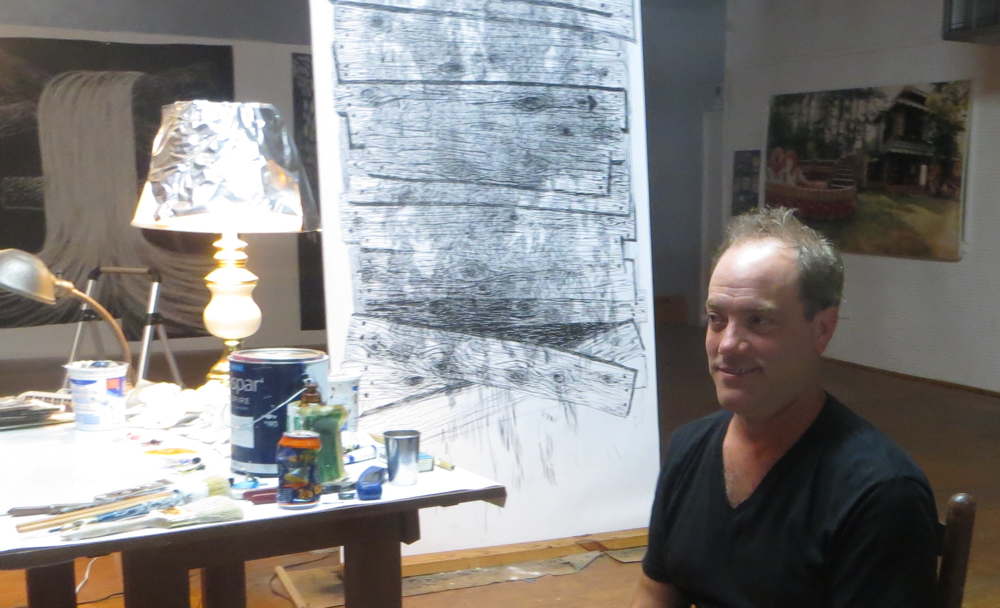
RELATED STORIES
Driving through western Georgia

Leave a Reply